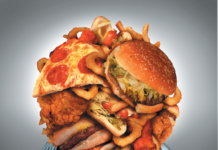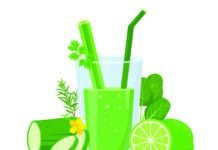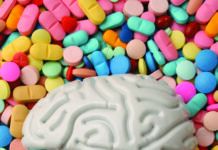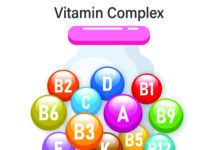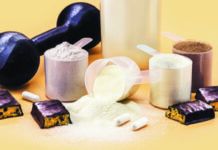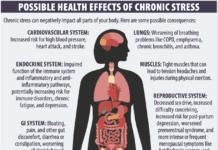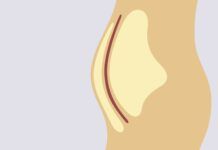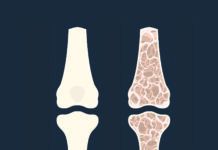Quenching your thirst for answers about sodas and your health.
Soft-drink lovers who thought they were doing something good for their health got a jolt-not the highly caffeinated soda kind-earlier this year when a report linked diet sodas to greater risk of stroke and heart attack. The surprising findings captured headlines and blared over the nightly news: In a study of 2,564 people, average age 69, over about nine years, drinking diet soda daily was associated with a 60% higher rate of stroke, heart attack and death from cardiovascular causes. Even after adjusting for other factors linked to heart disease, diet-soda drinkers remained at 48% greater risk.
Even more startling, no similar added risk was seen for regular consumers of the sugared sodas that health experts are always warning us against. The findings seemed unjust, if not downright nuts.
Indeed, many observers urge caution in making too much of the study, regardless of the headlines it garnered. Im confident these findings will be overturned, comments Tufts Irwin H. Rosenberg, MD, editor of the Health & Nutrition Letter. The real concern remains sugared soft drinks, which have gotten a free ride for years in their health impact.
So how should health-conscious people quench their thirst? And what else does recent research have to say about soft drinks?
Diet-drink downsides
First, before you ditch diet sodas completely, its worth noting that the controversial new study was presented to the International Stroke Conference, and has yet to be published in a peer-reviewed scientific journal. Moreover, the number of participants sipping diet sodas daily was small, only 116. It could also be that people preferring diet drinks are compensating for otherwise unhealthy food choices-washing down a Mega-Burger and fries with a diet cola, for example.
The fundamental question, says Alice Lichtenstein, DSc, director of Tufts HNRCA Cardiovascular Nutrition Laboratory, is whether the effects observed that are attributed to diet soda are a direct effect of the beverage or associated with characteristics of individuals who choose or are advised to consume diet soda. It is more likely an overweight person will choose a diet soda; those individuals are predisposed to heart disease, type-2 diabetes and metabolic syndrome. Only a small portion of this potential confounding can be controlled for during statistical analysis of the data.
Even lead researcher Hannah Gardener, ScD, of the University of Miami in Florida, cautioned that the findings are too preliminary to suggest any dietary advice.
This is not the first study, however, to link diet sodas with health problems. In 2007, researchers including Tufts scientist Paul F. Jacques, PhD, reported in Circulation that people who consumed one or more soft drinks daily-including diet sodas-were 48% more likely to develop metabolic syndrome, a precursor of heart disease and type-2 diabetes. Soda drinkers were also at greater risk for components of the syndrome, such as obesity, hypertension and unhealthy cholesterol levels.
| By the Numbers Depending on the brand, a 12-ounce serving of regular cola contains 140-150 calories and 39-41 grams of sugars, along with about 38 mg of caffeine, 30 mg of sodium, 10 mg of potassium and 53 mg of phosphorus. Soft drinks contain zero fat and zero protein. |
And too many colas-diet or otherwise- might also be bad for your bones. In 2007, a Tufts study that focused on older people found that drinking cola was associated with lower bone-mineral density in women, though not in men. Those findings have subsequently been supported in a study of younger women, ages 18 to 40, randomly assigned to drink 24 ounces of either diet cola or water on two study days. Three hours after the beverage, urine was collected and analyzed. Among the 16 participants, excretion of calcium as well as phosphorus was significantly higher after drinking diet cola. A negative calcium balance in the body is a marker of risk for low bone-mineral density. (Unknown, says Lichtenstein, is whether the same findings would have been observed were regular soda and water compared, or regular soda and diet soda.)
Sizing up sugary sodas
Despite such evidence for moderation in downing diet sodas, the greater health concern continues to be sugary soft drinks. The 2010 Dietary Guidelines for Americans cautioned, Although they provide needed water, many beverages add calories to the diet without providing essential nutrients. Thats a key reason the Guidelines, for the first time, advised people to drink water instead of sugary drinks. Among all US adults, sodas, energy and sports drinks rank as the fourth-highest source of calories, an average 112 per day.
In advising Americans to limit added sugars, the 2010 Dietary Guidelines also noted that sodas, energy and sports drinks are the number-one source of added sugars in the US diet, at 30% of total consumption. And theres little doubt added sugars are implicated in Americans expanding waistlines: A new review of 27 years of data from the Minnesota Heart Survey found that added-sugar consumption increased for men and women in all age groups from 1982 to 2009-paralleling an increase in body-mass index (BMI).
On the flip side, cutting back on those liquid calories may be more effective for weight loss than skipping the same amount of calories in solid food. A 2009 study of data on 810 adults found that each daily 12-ounce serving of sugared soft drinks eliminated from the diet led to one pound of weight loss over six months.
Hypertension in a can?
Besides boosting obesity, sugary sodas may play a specific role in high blood pressure. New research published in Hypertension reports that people who drink more sugar-sweetened beverages, such as sodas and sweetened fruit juice, tend to have higher blood-pressure readings. Ian J. Brown, PhD, of Imperial College London, and colleagues analyzed data on 2,696 US and UK participants in the INTERMAP study. They found that each additional sugary beverage per day was associated with an extra 1.6 mm Hg in systolic blood pressure (the first number in a blood-pressure reading). There was also a direct association with higher diastolic blood pressure. No such link was seen for diet beverages.
Dr. Brown and colleagues suggested several possible explanations. It appears that calories from these drinks displace calories from other foods that have beneficial nutrients such as minerals and vitamins, Dr. Brown said. It could also be that fructose (a simple sugar found in ordinary sugar as well as in high-fructose corn syrup), by increasing the bodys production of uric acid, thereby decreases levels of nitric acid-a vasodilator that expands blood vessels.
A 2010 study published in the Journal of the American Society of Nephrology looked specifically at fructose intake and high blood pressure. In the analysis of data on 4,528 adults from a national nutrition survey, consuming at least 74 grams daily of fructose-the amount in two and a half regular soft drinks-was associated with a 26% to 77% greater risk of crossing various thresholds of hypertension. Intake of fructose, the only sugar studied, was linked to higher systolic, but not diastolic, blood pressure.
Cutting down on sugary drinks, on the other hand, seems to help lower blood pressure. In another 2010 study, published in Circulation, Louisiana State University researchers found that people who drank just one fewer sugary beverage per day significantly lowered their blood pressure over 18 months. The study used data on 810 adults, ages 25 to 79, mostly with borderline high blood pressure or stage 1 hypertension. Those who opted for one fewer sugary beverage per day saw an average 1.8 mm Hg drop in systolic pressure and 1.1 mm Hg reduction in diastolic readings. The association persisted even after controlling for weight loss, suggesting that obesity is not the only factor at work.
Cancer and other concerns
Other recent studies point to a range of additional reasons not to overindulge in sugary beverages. For example, while incidence of relatively rare but deadly pancreatic cancer has plateaued in the US, rates continue to rise in Asia-a consequence, some experts suspect, of a trend toward a more westernized lifestyle and diet, including soft drinks. A study that followed 60,524 Singapore adults over 14 years supports that theory: Researchers found that participants who drank two or more soft drinks per week were 82% more likely to develop pancreatic cancer.
Participants answered 146 questions on their dietary habits at the start of the study, and responses were subsequently compared to official records of deaths from pancreatic cancer. A total of 140 participants died of the cancer during the follow-up period. Results, published in Cancer Biomarkers, Epidemiology and Prevention in 2010, were adjusted for known risk factors such as smoking. Three of four similar US studies have also found an association between drinking sugary sodas and pancreatic cancer. Some researchers believe high sugar intake may expose the pancreas to concentrations of insulin that promote cancer-cell growth.
A diet high in sugary sodas may also be a red flag for your liver. Israeli research published in the Journal of Hepatology in 2009 reported that people with non-alcoholic fatty liver disease (NAFLD) consumed five times as many carbohydrates from soft drinks as those without the disease. In comparing diets among 90 participants, researchers found that 80% of those with NAFLD consumed soft drinks in excess, defined as more than about 17 ounces daily. The more soft drinks participants downed, the more likely they were to have NAFLD. Although the study couldnt prove cause and effect, scientists concluded, it indicates that soft drink consumption is a strong predictor of fatty liver.
Soft drinks might also be connected to the rising incidence of gout-a painful inflammatory arthritis-in the US. Researchers who analyzed data on nearly 80,000 women over 22 years from the Nurses Health Study found an association between sweetened soft-drink and orange juice consumption and gout. Overall, women with the highest fructose intake had a 62% higher risk of gout than those with the lowest. Compared to drinking less than one regular soda per month, women averaging one a day had a 74% greater risk and those averaging two or more sodas daily saw a 240% increased risk. Since only 778 women were diagnosed with gout during the study, however, the investigators noted in JAMA, the contribution of fructose-rich drinks to the risk of gout in the population is likely modest.
Tufts Lichtenstein adds, One is always concerned that these data are confounded by characteristics of people who choose to drink sugar-sweetened soda and other diet and lifestyle choices they make. Poor choices in the beverage category are likely accompanied by poor choices in other food categories and physical activities (or the lack thereof).
Nevertheless, she says, there appears to be no benefit of drinking sugar-sweetened drinks and when one is thirsty it is certainly easy to guzzle a large number of unneeded calories in a very short period of time. You can save a lot of money by simply turning on the tap instead-enough to invest in a good pair of walking shoes.
| TO LEARN MORE: Circulation, July 31, 2007, circ.ahajournals.org/cgi/content/full/116/5/480. Hypertension, April 1, 2011; abstract at dx.doi.org/10.1161/HYPERTENSIONAHA.110.165456. Journal of the American Society of Nephrology, September 2010; abstract at dx.doi.org/ 10.1681/ASN.2009111111. Circulation, June 2010; abstract at dx.doi.org/10.1161/CIRCULATIONAHA.109.911164. Cancer Biomarkers, Epidemiology and Prevention, February 2010; abstract at cebp.aacrjournals.org/content/19/2/447. Journal of Hepatology, November 2009; abstract at dx.doi.org/10.1016/j.jhep.2009.05.033. JAMA, Nov. 24, 2010; abstract at dx.doi.org/10.1001/jama.2010.1638. |

